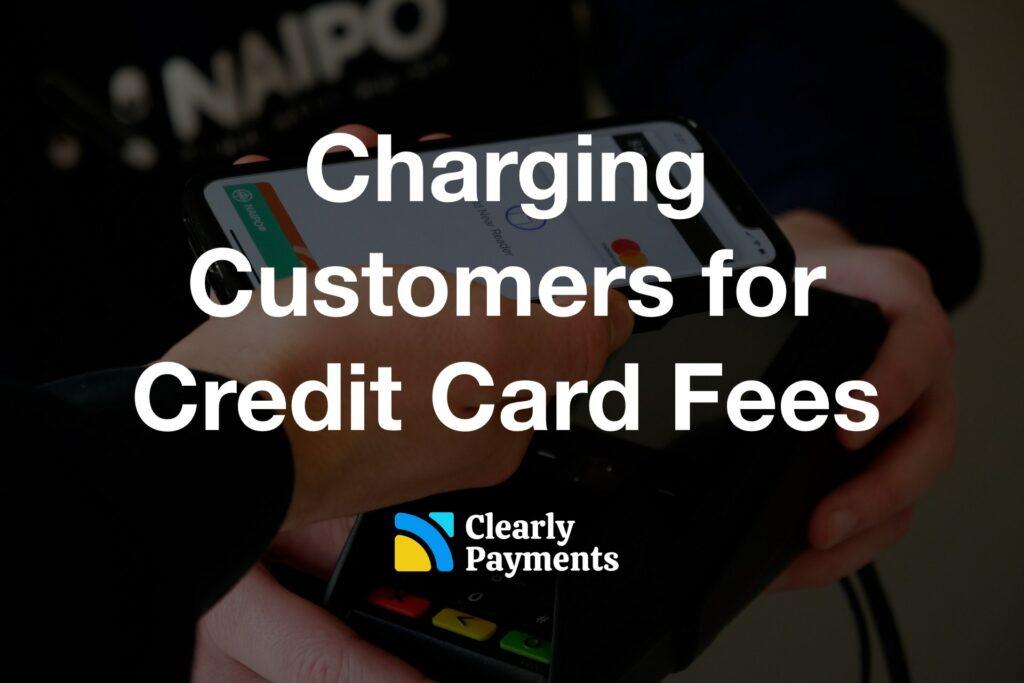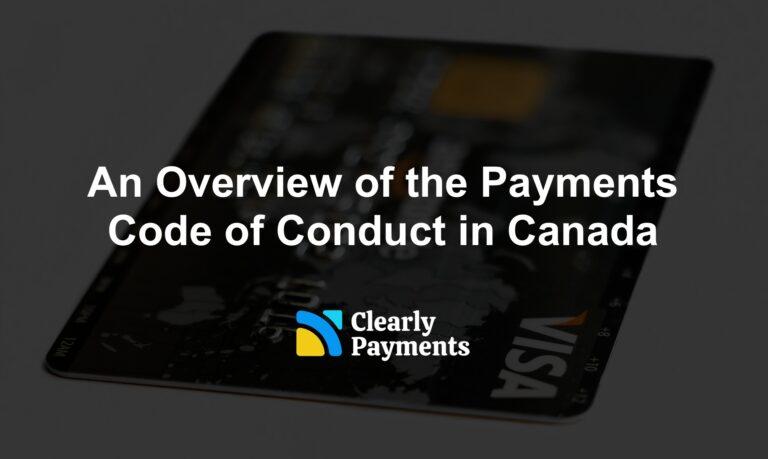Credit card surcharging, or the practice of passing on credit card transaction fees to customers, has become a pivotal point of discussion for businesses seeking to manage their financial well-being in an evolving marketplace.
We will embark on a comprehensive exploration of the surcharging landscape. From the reasons behind its adoption to the ethical and financial considerations that business owners must grapple with.
How many businesses actually charge customers for credit cards fees?
Many businesses grapple with the decision of whether to charge customers for using credit cards due to the associated credit card processing fees. These fees typically range from 1.6% to 3.5% of the total transaction amount. For example, on a $100 sale, a business may incur credit card fees of $1.60 to $3.50. This can pose a significant cost to businesses, especially those with smaller profit margins or high transaction volumes.
In recent years, approximately 20% of businesses have implemented the strategy to pass these credit card processing fees onto their customers. While this approach may help offset some of the financial burden, it’s not without its challenges. Many businesses are acutely aware of customer sentiment regarding such fees.
According to surveys, 71% of business customers express a preference for avoiding companies that charge a fee to use a credit card. This sentiment underscores the potential negative impact that credit card fees can have on customer perception and loyalty.
Businesses that choose to impose credit card fees must carefully consider the potential consequences, including the possibility of driving customers away or diminishing their overall satisfaction. Striking a balance between covering operational costs and maintaining positive customer relationships is a crucial consideration for businesses when deciding whether to charge customers for credit card usage.
The perceptions of credit card surgarging
The public sentiment around surcharges is intricate. Some customers regard their transactions with businesses as a privilege, believing that the costs of payment processing should squarely rest on the business’s shoulders.
The escalating prevalence of the tipping culture in North America, compounded by inflation and persistent economic turbulence, has intensified the discussion of passing credit card fees to consumers. While gratuities are customary in specific sectors such as restaurants and personal care services, the extension of this practice to everyday services and products has ignited a contentious debate. Appending an additional expense to a customer’s bill can give rise to controversy, with numerous customers preferring unambiguous pricing that factors in tips and taxes from the outset.
Nevertheless, there exists a subset of customers who are amenable to assuming additional fees or considering alternative payment methods. This indicates the existence of a potential market segment willing to shoulder the burden of your processing expenses.
While the concept of passing on these costs may appear to be an elegant solution for curtailing overheads, it is paramount to tailor this approach based on the unique circumstances of your business. Some enterprises have encountered resistance from consumers due to the imposition of surcharges, while others have refrained from such practices in order to safeguard customer interests and maintain affordability.
Checkout experience with credit card surcharge
The checkout experience with credit card surcharge can significantly impact a customer’s perception of a business and their willingness to complete a transaction. When implemented thoughtfully and transparently, it can be a relatively smooth process that benefits both the merchant and the customer.
First and foremost, transparency is key. Customers appreciate clear and upfront communication about the surcharge. This information should be prominently displayed at various touchpoints during the checkout process, such as at the entrance of a physical store, at the point of sale, or on an e-commerce website. Clearly stating the surcharge amount as a percentage or fixed fee ensures that customers are fully aware of the additional cost associated with using a credit card. This transparency fosters trust and prevents any unpleasant surprises at the time of payment.
Moreover, providing customers with alternative payment options can enhance the checkout experience. Alongside the surcharge information, businesses should offer alternatives like cash, debit cards, or mobile payment methods that do not incur additional fees. This empowers customers to make an informed choice based on their preferences and financial considerations, contributing to a more positive overall experience. Additionally, some businesses choose to implement cash discount programs, where customers receive a discount for using cash or other fee-free payment methods, further incentivizing cost-effective choices. In this way, credit card surcharging, when executed transparently and with consideration for customer choices, can be an integrated part of the checkout process that benefits both the business and its patrons.
Benefits of credit card surcharging
While it’s a strategy that should be implemented carefully and within legal constraints, it does offer several advantages for merchants. Here are some of the key benefits of credit card surcharging:
Cost Recovery: One of the most significant benefits is cost recovery. Credit card processing fees can eat into a business’s profit margins, especially for small businesses with thin margins. Surcharging allows merchants to recoup a portion of these fees, helping them maintain healthier bottom lines.
Transparency: Surcharging can promote transparency in pricing. When customers are aware of the credit card surcharge, they have a clearer understanding of the true cost of using credit cards for transactions. This transparency can build trust and lead to more informed purchasing decisions.
Cash Discount Programs: Some businesses use surcharging in conjunction with cash discount programs. In this setup, customers who pay with cash or alternative payment methods are offered a discount, while those who choose credit cards bear the surcharge. This encourages customers to opt for cost-effective payment methods, reducing the merchant’s expenses.
Flexibility: Credit card surcharging provides flexibility in managing payment processing costs. Businesses can adjust surcharge rates based on the type of credit card used or the amount of the transaction, allowing for more tailored cost recovery strategies.
Improved Profitability: By offsetting credit card processing costs, businesses can improve their profitability. This additional revenue can be reinvested in the business, used to enhance services, or passed on to customers in the form of lower prices, potentially making the business more competitive.
Adaptation to Market Changes: Credit card surcharging can be a strategic response to changes in the payment landscape. As new payment technologies emerge and consumer preferences shift, businesses can adapt their surcharging strategies to align with these changes.
It’s important to note that while credit card surcharging offers these benefits, it must be implemented in compliance with applicable laws and regulations. Additionally, businesses must carefully consider customer perception and preferences, as excessive surcharges or lack of transparency can alienate customers. Striking the right balance between cost recovery and customer satisfaction is crucial for the success of surcharging strategies.
Industries that seem to benefit the most for passing credit card fees to customers
Credit card surcharging can be more beneficial for certain industries than others, depending on various factors. Here are some industries where credit card surcharging may be particularly well-suited:
Retail: Retail businesses often deal with tight profit margins, making credit card surcharging an attractive option to offset processing fees. Surcharging can work well in various retail segments, from clothing stores to electronics retailers.
Hospitality: Hotels, restaurants, and travel-related businesses can benefit from credit card surcharging, especially for large transactions such as hotel bookings and fine dining bills. These businesses frequently encounter substantial credit card processing fees, and surcharging can help recover some of these costs.
E-commerce: Online businesses can also find value in credit card surcharging. Many e-commerce platforms offer the flexibility to apply surcharges to credit card transactions, allowing online retailers to manage their processing costs effectively.
B2B Services: Businesses that offer services to other businesses, such as consulting firms, marketing agencies, and IT services, can benefit from surcharging, especially for large contract payments.
Wholesale and Manufacturing: Companies in the wholesale and manufacturing sectors may engage in substantial transactions with credit cards, particularly for smaller purchases or international sales. Surcharging can help manage processing costs in these cases.
Ticketing and Events: Event ticketing platforms and venues frequently deal with online and credit card transactions. Implementing surcharges can be a way to mitigate the processing costs associated with ticket sales.
Subscription-Based Services: Subscription-based businesses that rely on recurring payments, such as streaming services or subscription box companies, can explore surcharging to offset ongoing credit card processing fees.
Healthcare: Healthcare providers, including medical practices and dental offices, often handle credit card transactions for services rendered. Implementing surcharging may help manage processing fees associated with patient payments.
It’s important to note that the suitability of credit card surcharging can depend on factors such as the volume of credit card transactions, the industry’s competitive landscape, customer preferences, and applicable legal regulations. Businesses should carefully evaluate these factors and consider customer perception before implementing surcharging strategies. Additionally, businesses should ensure compliance with local and national regulations regarding surcharging to avoid legal issues.
The rules and laws for credit card surcharging
The landscape of credit card surcharges is shaped by a pivotal 2013 court settlement involving a consortium of merchants and two major card giants, Visa and Mastercard. In this intricate world, each card network lays down its own set of guidelines. However, it’s the shared rules of Visa and Mastercard that significantly influence this domain:
Advance Notice Requirement: It is imperative for merchants to adhere to a 30-day written notice protocol. This notice must be communicated to both the card network and the payment processor before surcharges can be instituted.
Exemption of Debit and Prepaid Cards: Surcharges are a no-go zone for debit and prepaid card transactions.
The Fee Threshold: There’s a cap on how much businesses can charge as a surcharge fee. It should not exceed the actual cost incurred in processing the credit card transaction. Visa mandates a 3% limit on the purchase price, while Mastercard permits up to 4%.
Disclosure Mandate: Transparency is key. Merchants must conspicuously display surcharge notices at their physical locations, including entrances and point-of-sale areas. In the digital realm, these notices should be prominently featured on the business website wherever the card brand is mentioned.
Receipt Clarity: The surcharge amount must be unmistakably detailed on the customer’s receipt.
Consider Other Networks: It’s essential to keep in mind that card networks like American Express and Discover may have their unique sets of requirements that businesses must also comply with.
Now, businesses have two distinct approaches at their disposal when it comes to levying credit card surcharges:
Brand-Level Surcharge: This method entails applying a uniform surcharge percentage across all cards within a specific brand, such as Visa. However, this percentage should not surpass the average processing cost borne by the merchant. Visa imposes a 3% cap, while Mastercard allows up to 4%.
Product-Level Surcharge: Alternatively, businesses can opt for a product-level surcharge. This involves varying the surcharge percentage based on the type of card used. For instance, higher surcharge rates can be applied to rewards cards due to their typically elevated processing fees. Nevertheless, the surcharge cannot surpass the specific processing cost incurred by the merchant for that card type, capped at 3% for Visa and 4% for Mastercard.
These regulations aim to strike a delicate balance. They enable businesses to recoup processing expenses while maintaining the integrity of credit card transactions, fostering transparency and fairness. For more information on the rules for surcharging, you can review the FAQ from Visa or the published set of rules from MasterCard.
Alternatives to credit card surcharging
Adjusting Your Pricing: Rather than directly passing on processing costs, some businesses opt to incorporate these expenses into the prices of their products or services. This practice, already embraced by many enterprises to offset their operational expenditures, necessitates a meticulous assessment of your current costs and the determination of the most judicious approach to recoup or diminish these expenses, particularly in the face of economic challenges.
Lowering Your Processing Costs with Your Payment Processor: While payment processors proffer tools designed to facilitate seamless fee transfer, additional opportunities for cost reduction may be unearthed through a reevaluation of your processing expenditures. This may encompass a review of your pricing model, the transition to an interchange-plus pricing structure to leverage lower interchange rates, and a meticulous examination of your merchant statement to unveil concealed fees. Furthermore, staying abreast of interchange rate fluctuations and harnessing tools like recurring billing to access lower tokenized interchange rates can yield further reductions in processing costs. Low fees is one reason why TCM is growing.
Offering a Discount as an Alternative: In both Canada and the U.S., numerous merchants have devised a workaround to fees by extending discounts equivalent to potential fees. This strategy entices customers to opt for alternative payment methods such as cash or debit. Instead of imposing an additional charge, which may not resonate uniformly with all customers, businesses have opted to accommodate operational expenses through a friendly discount equivalent to the value of the fee, should customers opt for an alternate payment method.




